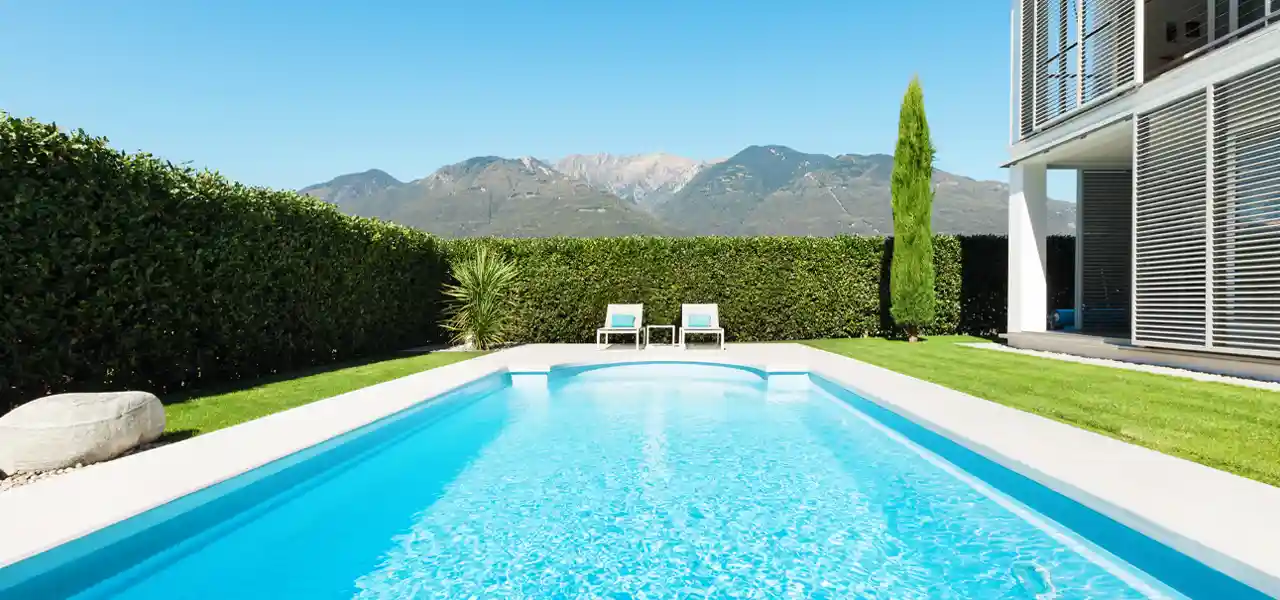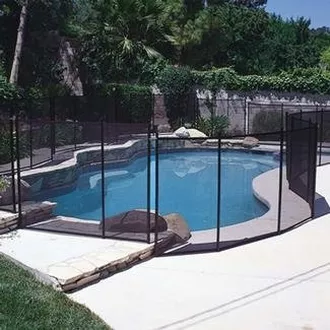FREE Standard Shipping On All Orders $100 or More!*

California Residential Pool Safety Codes
In a similar way to updates and improvements made recently to the California energy standards, folks in Sacramento were also busy adding some new pool safety code requirements to the 1990's pool safety legislation, now known as the California Pool Safety Act 2018. The number of required pool safety features in for residential pools in California has doubled! In the past, just one drowning prevention or safety feature was required in the golden state.
New California Pool Safety Code Requirements
Now for 2019, in addition to a regular 3-sided pool fence, all new pools and permitted renovations (those that require a permit) must have at least two of these safety features:
- Enclosure that isolates the pool or spa from the home.
- Mesh safety fence that isolates the pool or spa (ASTM F2286-05).
- Safety pool cover or automatic cover (ASTM F1346-91).
- Door alarms or gate alarms (UL 2017).
- Door closing and latching systems, with latch at least 54" above floor.
- Pool alarms meeting ASTM F2208 standards.
What about when you sell a home with a pool in California? Sellers are not required to bring the pool or home 'up to code', but you may be asked to anyway, after the buyer reads the home and pool inspection report.
As defined in the code, “Swimming pool or pool means any structure intended for swimming or recreational bathing that contains water over 18 inches deep. “Swimming pool” includes in-ground and above ground structures and includes, but is not limited to, hot tubs, spas, portable spas, and nonportable wading pools."
California Pool Fence Safety Codes

Do you need a fence around a pool in California? Yes, a fence is required if your pool is over 18" deep. In addition, your local county may have specific pool fence ordinances that are used, but all residential pools are required to have pool fencing.
Pool fences in California need to be 5 ft tall with gaps between fence slats of 4" or less, gaps of 2" or less under the fence, and fence gates must be self-closing and self-latching. They can be 3-sided and attached to the house or other structure, but that doesn't count as one of the listed pool safety features.
Mesh safety fences, when installed with the self-closing gates, can be an attractive and affordable way to add a layer of protection, and comply with the listed safety feature #2. Removable pool fence comes in 10 ft sections adjustable to span any length. Connect to walls or perimeter fences, to completely isolate the pool or spa from the home and other backyard and patio areas.
California Pool Alarm Safety Codes
Now that two pool safety devices are required, many Californians are opting to secure the back doors and garage doors that lead to the pool area, as an easy route to compliance.
Approved pool door closers must not only close the door, but provide an additional door latch, at a height of 54" above the floor. Devices for accomplishing this are complicated and expensive, especially when there are several doors to be secured.
Poolguard DAPT door alarms are the easier alternative to securing doors that lead to the pool or back yard areas, like garage doors. Pool door alarms work on regular doors and sliding glass doors, and fully comply as one of the now two required safety features. UL 2017 listed door alarm (as required) installs in minutes and operates on a 9V battery.
Another easy to install safety feature that will complete your compliance with the California code for pools, are the PoolGuard PGRM-2 pool alarms. Sounds an alarm at the pool and in the house if anything over 18 lbs falls in the pool. Meets ASTM F2208 standards, and is ready to go right out of the box, with your 9V battery installed.
California Pool Drain Safety Codes
In 2002, the VGB pool and spa safety act was signed into law, and new pools and spas were now required to install dual main drain systems, and to use safer VGB main drain covers, which reduces the likelihood of suction entrapment on pool drains.
For pools in California, like the rest of the nation, if you are issued a permit for work related to pool or spa upgrades and renovation work, you will need to replace the drain covers with replacement safety drain covers meeting ANSI/APSP-16 standards.
Unlike commercial and public pools, residential pools in California are not required to install dual main drain systems, only to replace older anti-vortex main drain covers with new VGB compliant anti-entrapment suction outlet covers, or safety drain covers.
Meeting the New Pool Safety Code Requirements
If your pool was built before 2007, you are not required to add more safety to your pool, just maintain your fence and gates, as long as no large scale pool renovation projects take place in the near future.
For pools built after 2007, two drowning prevention or safety features are required in California, this could be a pool alarm and door alarms, or a mesh pool fence for summer and a mesh safety cover for winter.
More permanent enclosures, like retaining walls, planters and decorative walls or structures can also be used as effective barriers, and should qualify for compliance with most inspectors, but check with yours first.